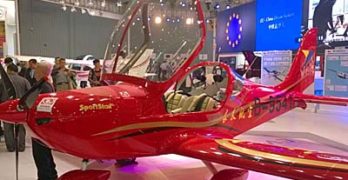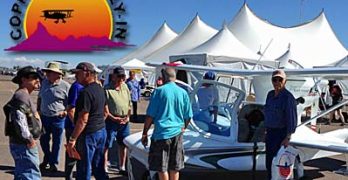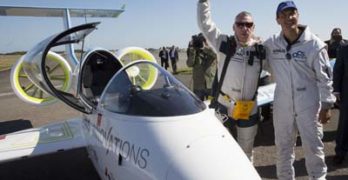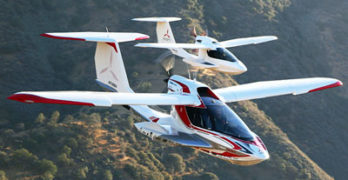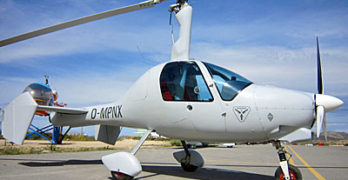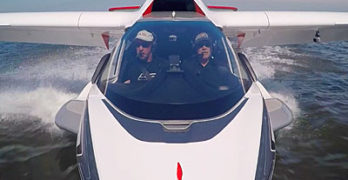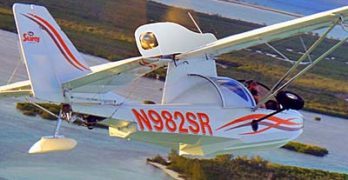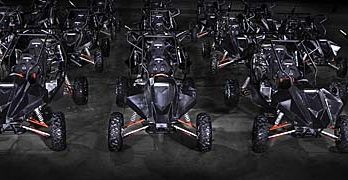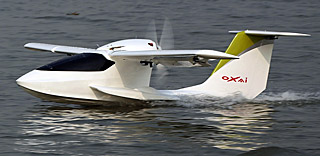American readers of ByDanJohnson.com may be surprised to hear that more than a third of all visitors are from outside the United States. In a related fact, America has more pilots than any other country (very roughly half of the world aviator population) but more light aircraft are sold in other country by a ratio of around 10:1. These figures are fuzzy for a number of reasons but the point is that for LSA, the world is their market.
That statement is further proven by two recent successes.
Evektor reported it successfully passed the audit of the Civil Aviation Administration of China (CAAC) for production at the company’s Kunovice, Czech Republic plant. “CAAC’s audit team inspected the production facilities of Evektor-Aerotechnik focused on quality assurance, engineering and manufacturing, and quality inspections of fixed wing light sport aircraft,” said Evektor.
This Czech company — the first to obtain FAA acceptance back in 2005 — was able to prove compliance with CAAC requirements for Light-Sport Aircraft, meaning Evektor is fully authorized by the CAAC for deliveries of SportStar SL aircraft to the Chinese market.
Search Results for : Flight Design
Not finding exactly what you expected? Try our advanced search option.
Select a manufacturer to go straight to all our content about that manufacturer.
Select an aircraft model to go straight to all our content about that model.
Aircraft of Copperstate 2015 Continued (Part 2)
In this Copperstate Part 2 article we resume the list of aircraft Videoman Dave and I reviewed at the show south of Phoenix, Arizona in Casa Grande. To remind you, this was the 43rd running of this show that invites all sorts of aircraft — and many dozens did fly in each day plus others did fly-over demonstrations.
However, Copperstate generates a particularly strong response from manufacturers and representatives of Light-Sport Aircraft, light kit aircraft, and utralights. That makes it a must-go show for our team at ByDanJohnson.com and Dave’s SportAviationMagazine.com YouTube channel that so many of you seem to enjoy.
Like other shows, many of you approached us at the event and expressed your ongoing interest in the video content we create. We are very pleased about your loyal viewership and will continue to work hard to build our growing video library … already at 400+ videos and moving steadily to 500 and beyond.
Racing Down Electric Avenue … Here Comes Airbus
At the recently concluded Palm Springs Expo, a keynote address was provided by George Bye, the man behind the Sun Flyer project that aims to put electric two seaters into flight schools. Pipistrel is already selling into this market with its Electro (video) and while only a small number of aircraft are in use, the race is on for more … much more.
Airbus made big news back in July when a race developed to see who would cross the English Channel first in an electric powered airplane. Of course, the whole thing was a bit moot because it had been done years before. Longtime electric pioneer Eric Raymond of Sunseeker Duo noted, “It was already done in 1981 by the Solar Challenger, which flew from Paris to London at 14,000 feet. [Famous hang glider pilot and manufacturer Gerard] Thevenot even flew an electric trike across.
Video Pilot Report: Icon Aircraft A5 LSA Seaplane
The Video Pilot Report below may be one of the most anticipated VPRs my video partner Dave and I have produced. I did the flying at AirVenture Oshkosh 2015 on Lake Winnebago in late July, but because Icon preferred to provide the video footage, it has taken some weeks to put it all together.
Production of one of these VPRs is a two-part effort. First, I invested some time to get to where Icon did their demo flying (away from all the other flying locations associated with Oshkosh). Weather and the company’s desire to take aloft a reported 150 of their waiting owners forced a couple schedule changes. Since returning home, we worked with several helpful folks at Icon to assemble all the right video pieces. Finally, Dave invested many hours editing what you see below (or here).
Our video should show you most of what you want to see about this impressive LSA including water takeoffs and landings, in-flight maneuvering, stalls (such as they are), low flying over the water, and the interior of the airplane including Icon’s highly emphasized Angle of Attack indicator.
Gyroplanes and Autogyros … Same or Different?
(Images updated 9/2/15)
Are you intrigued by airplanes that spin their wings? Helicopters are out of the budget for most pilots but have you ever sampled a gyroplane? Whatever your answer, you should know that Rotax Aircraft Engines reports selling more 912 powerplants to gyro producers than to any other airplane segment. Most of those are sold outside the USA.
Americans like and do fly gyroplanes, of course. Most associate the type with the Bensen Gyrocopter, but the history record reveals its overseas start. Again today, gyros are predominantly a non-U.S. phenomenon, a fact LAMA is trying to change through its advocacy efforts to press FAA to reconsider the fully built SLSA gyro as once envisioned under the SP/LSA rule.
While most pilots can identify a gyroplane, they mentally picture an aircraft with the engine in the rear. That isn’t always the case, though.
How about the “odd” looking gyroplane pictured with this article, with its tractor engine?
Van’s RV-12 Enter Rare Realm of Four Digits
I’ve enjoyed a front row seat for all eleven years that Light-Sport Aircraft have been part of the aviation firmament. In those years of closely following this industry, I’ve only seen companies reach the four digit horizon three times.
What does that mean and why might you find it meaningful?
First came Cessna’s Skycatcher. More recently it was (quite convincingly) Icon’s A5. Now, welcome Van’s Aircraft.
Cessna once claimed more than 1,000 orders for their now-discontinued Skycatcher LSA. The company delivered 271 of them (according to our review of FAA’s N-number database) but we won’t see any more. Icon reports more than 1,300 orders, making them Top Gun in the LSA roost, though they have delivered only one, to EAA’s Young Eagles program. Then, we have Van’s … the undisputed leader of kit aircraft deliveries. In fact, the latter is nearly ready to enter the aviation stratosphere of five digits.
DemoVenture 2015 — Flying at Oshkosh
Shows like Sebring and Midwest LSA Expo are known for being great places to demo fly a Light-Sport or light kit you may be considering to buy. They earned that reputation because it is typically much easier to fly at those lower-key, less crowded events than at giant shows like AirVenture. However, some companies make demo flying a mission at Oshkosh and this article covers three that delivered an exceptional number of demo flights.
Icon reported doing around 150 demonstration flights in the first public outing of the long-awaited LSA seaplane. Writers for aviation’s largest magazines got their private crack at the new bird beforehand … since returning from Oshkosh, I’ve seen A5 on the covers of Flying, AOPA Pilot, Sport Aviation, and Plane & Pilot. That’s an enormous splash. I can’t recall any single aircraft capturing all four titles in the same month, quite a credit to Team Icon for deftly executing such a major marketing push.
Searey Now Completely Ready to Enter China
Icon recently won FAA acceptance as the California company demonstrated meeting ASTM standards for their A5 seaplane and made a big show out of delivering the first airplane to EAA Young Eagles … the same move, by the way, as Cessna did with their Skycatcher. We expect Icon’s future to work out better as they begin to fulfill more than 1,300 orders.
However, another LSA seaplane is demonstrably ahead in the government approval race.
“Led by consultants from SilverLight Aviation, Progressive Aerodyne of Tavares, Florida recently received Production Certificate approval from China’s CAAC.” According to SilverLight spokesman Abid Farooqui, “This makes Searey the first U.S.-made LSA to achieve this distinction and have both Type Design Approval as well as a Production Certificate for its Searey LSA airplane.” Searey’s earlier Type Design approval and recent Production Certificate were gained under the supervision and guidance of SilverLight, which is based in Zephyrhills.
Gutsy-Looking SkyRunner Turned Heads at AirVenture
To many eyes, Icon stole the show at EAA AirVenture Oshkosh 2015. Many other newsworthy announcements were made — several of which I reported on this website — yet Icon’s splashy marketing probably drew the most eyes, just as it does on Facebook. However, thanks to fellow journalist Roy Beisswenger, I was introduced to the high-energy gang at SkyRunner.
I don’t know if “radical” fits the marketing designs of SkyRunner LLC, but their take on the flying ATV or dune buggy takes the genre to a whole new realm. I find myself searching for the right words to describe SkyRunner. Imagine I-Tec’s Maverick but with an attitude. Then wrap your mind around two powerful engines to make this baby go. Maverick looked vaguely like a mild-mannered road car where SkyRunner abandons that image for a Ninja motorcycle look crossed with the baddest four-wheeler ATV you ever saw.
Another LSA Seaplane … Another Flying Car
Some ideas appear irrepressible. One is LSA seaplanes. An entire flock of these are coming including a couple new ones I just discovered (and I’m one of those people constantly sniffing about for new light aircraft). The Oxai is the first such Chinese entry I’ve found but they are serious enough to bring ASTM expert Adam Morrison to China for a special one-company-only seminar about the industry consensus standards used to gain government agency acceptance of this new class of airplanes. A principal of consulting firm Streamline Designs, Adam is one of the industry’s leading experts and presents a training class on behalf of ASTM.
More on the Oxai M2 LSA seaplane later. For now, I want to write about a flying car … or maybe I should say “flying hotrod.” Recently I described the stylish Aeromobil from Slovakia. Now consider the gutsy-looking, off-road-capable SkyRunner from merry old England.
- « Previous Page
- 1
- …
- 80
- 81
- 82
- 83
- 84
- …
- 147
- Next Page »


